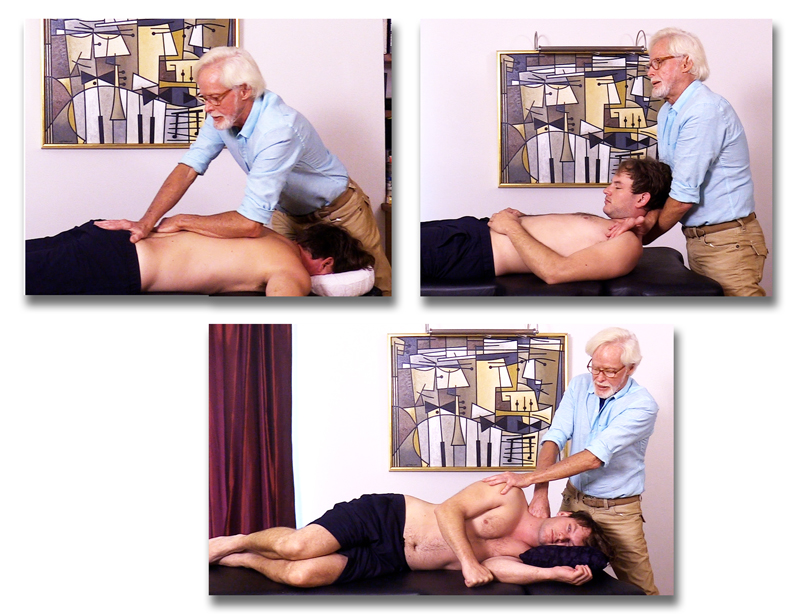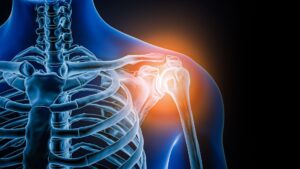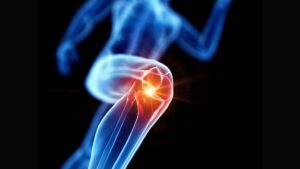It's Been 40 Years in the Making...
I’m super excited to announce the release of my Myoskeletal Spa Massage DVD and online video and in today’s blog post I’d like to tell you a little bit about it.
“Do you have a routine that you do when people don’t have specific problems? What do you do?” This a question I get all the time. So, I’ve finally released the Myoskeletal Spa Massage video program that answers that question and shows therapists exactly what I do. I’ve been wanting to show people this for ages and finally…it’s done!
This is an evolving routine that I’ve been refining over my 40 years in practice. In these videos, you’ll get to see a combination of soft tissue work and joint stretching techniques. It’s a head to toe routine that takes me about 55 minutes to work through each pertinent structure of the body. It’s broken down into Prone, Sidelying and Supine sections.

This routine is all about flow and rhythm. With a memorized routine you don’t have to think as much about what techniques you’re performing or what order to do them in. This allows you to focus on rhythm and flow so you can be more aware of your body mechanics and pay attention to how comfortable you are.
Of course, there’s no such thing as a “one size fits all” massage. Practitioners will always need to adapt to their own style and body structure, but I’ll give you tips throughout, for example, “If you’re arms are not long enough you can try it this way.” And even if you never use this routine in its entirely, you can pick pieces out of this and incorporate it into the massage work you already do.
This work is perfect for spa practitioners and I’d love to see spas add this massage to their menus. It’s a value-added service and clients will know that they are getting more than simple soft tissue work. There is a lot of assisted stretching, post isometric relaxation and what I call movement enhancers while you do the routine. A lot of this comes from the world of osteopathy and these movement enhancers are not typically taught to or used by massage therapists. So, they are quite unique and will help you stand out as a therapist. In doing this spa-based routine, you’re hiding powerful therapeutic techniques in what feels like, from the perspective of the client, a relaxation massage.
This is the first course where I’ve gone through a routine from start to finish. I perform the techniques on one side of the body and let you know when it’s time to move to the other side of the body.
This Myoskeletal Spa Massage video is a conglomeration of techniques I’ve learned over 30 years of practice. Being in the trenches for so many years, I’ve honed this routine through trial and error. It incorporates the things that have worked for me and techniques that seem to have universal appeal. As you use this routine on clients, pay attention to their breathing and how they react to the massage and you’ll see your clients drop into a deep state of relaxation.
You’ll observe how much pressure I’m applying, which is very important to see. I talk about the barrier concept in the video and the importance “meeting” the tissue and waiting for a response. You never want to work into a painful barrier. Some of the techniques may be contraindicated in some situations and I’ll make reference to those throughout.
Although the title of this program is “Myoskeletal Spa Massage,” it’s not just for spas. It’s for first time clients and allows you to introduce MAT techniques in a gentle way and explore or assess your client’s body to find out where there are restrictions or other issues. I use this on first-time clients all the time.
Even when someone needs specific therapeutic work, I often use this routine as a framework and spend extra time incorporating additional techniques to address that client’s specific issues. Like most therapists, the clients I see almost always complain of low back pain and neck pain problems. So those are the areas that receive more comprehensive coverage in this routine. However, I go through the sequence head to toe and I do this in all three positions (prone, sidelying, and supine), so that all these problem areas are covered several times from different perspectives or in different ways. It’s like a 3D massage.
I incorporate a lot of sidelying techniques in my own practice and I always have. That’s one thing that many therapists don’t take advantage of. There are so many things you can do in the sidelying position that you can’t do supine or prone. So, there is extensive sidelying techniques in this Myoskeletal routine.
If you’ve taken any of my courses, you often see the techniques in isolation. And although I provide guidelines, it’s another thing to see it happen in practice in a complete cohesive sequence. So, if you’re the type of therapist that needs helps in figuring out how to put it all together in an integrated way, this is going to be particularly helpful for you. You’ll see exactly how I apply techniques in a fluid sequence.
I would also encourage schools to use it in their programs. Indiana State University (ISU) is the only major United States institution that offers a minor in massage therapy and the program director Charlie Peebles will be using this routine in the massage program for his students.
Take a moment to check out the Myoskeletal Spa Massage program and pick up a copy for yourself as an early Christmas present while it’s on sale.









